Learn about 31 Types of Succulents and Cacti you can grow in your garden or indoors in this informative post.
Types of Succulents
When it comes to the types of succulents, you can divide them by the most popular genera. Some of the important ones are below:
1. Aeonium
Aeoniums are succulent plants with rosette-shaped clusters of fleshy, colorful leaves. They require minimal care and are perfect for both indoor and outdoor gardens, adding beauty and a touch of nature to your space. Check the best aeonium varieties here.
2. Agave
Agave stands tall with thick, spiky leaves that sprout from the base in a symmetrical arrangement. Its leaves can be smooth or jagged, adding a bold, sculptural presence to gardens. You can see the best Agave Varieties here.
3. Aloe
The long, pointed leaves are often green, but some varieties boast striking white spots or stripes. These leaves contain soothing gel and can vary in length and shape. See the best Aloe Varieties here.
4. Crassula
The plumped leaves come in an array of forms, from stacked cylinders to rounded rosettes. Their colors span from deep greens to silvery grays, providing diverse visual appeal. Look at the best Crassula here.
5. Euphorbia
Euphorbia showcases peculiar, geometric stems adorned with small, leaf-like structures. Some have thorns, while others feature smooth surfaces, adding intrigue to any succulent collection.
6. Echevería
The rosettes exhibit a wide color palette, from vibrant greens to purple and pink hues. Their unique leaf shapes range from spoon-like to intricate frills, making them stand out. See beautiful Echeveria Varieties here.
7. Haworthia
The compact leaves form dense clusters, often with translucent “windows” that allow sunlight to filter through. These windows come in various shapes, creating distinctive patterns. Discover Types of Haworthia here.
8. Lithops
Lithops, often called “living stones,” resemble small, camouflaged pebbles. Their two succulent leaves are fused, creating a mimicry of stones found in their native habitats.
9. Sedum
Sedum’s trailing stems or upright rosettes vary in texture, from powdery to glossy. Some sedum species display vibrant, seasonal flowers, adding charm to the plant’s appearance. Look at the Beautiful Types of Sedum here.
10. Sempervivum
Also known as “hens and chicks,” form tight rosettes with fleshy leaves. They produce offsets around the mother plant, creating a charming, clustered effect in various colors and sizes. Here are the best Best Types of Sempervivums.
Similarly, some of the most important cactus genera are below:
- Astrophytum: Astrophytum’s star-shaped patterns adorn their rounded bodies. These charming markings set them apart, with spines that are often few and far between.
- Echinopsis: Echinopsis cacti display large, showy flowers in various vibrant colors. Their cylindrical stems, covered in unique ribs, make them a striking addition to any desert garden.
- Ferocactus: It boasts stout, barrel-like bodies with prominent, fierce-looking spines. Some varieties wear their spines like crowns, while others have long, straight needles for protection.
- Mammillaria: Mammillaria features small, globe-shaped bodies covered in an array of delicate spines. Some have woolly tufts, while others sport colorful, flower-like crowns when in bloom.
- Opuntia: Opuntia, commonly known as prickly pear cactus, showcases flat, paddle-shaped stems with clusters of tiny, hair-like spines. They produce vibrant, edible fruits called “tunas.”
- Schlumbergera: Schlumbergera, or Christmas cactus, presents flat, segmented stems that drape gracefully. Their pendulous branches burst with colorful blossoms during the holiday season, adding festive beauty to indoor spaces.
Instead of dividing the succulents on the basis of their genus, we’re dividing them according to their attributes. You’ll see various lists below showing the best Trailing succulents, Flowering succulents, Shade-loving succulents, Cacti, Colorful succulents, Mini succulents, and Edible succulents.
Look at the beautiful purple succulents here
Trailing Succulents
Trailing succulents are those who hang or trail from the baskets or containers. They are perfect for hanging baskets but will look equally well in the garden. Some of the best trailing succulents are listed below.
1. Burro’s Tail
Botanical Name: Sedum morganianum
It’s a good succulent for beginners as it’s easy to grow and care for. Also known as a donkey’s tail. The Blooms are in the beautiful shade of red or pink, whereas the leaves are chalky and greyish-green.
Learn to Grow Tall Big Burro’s Tail here
2. String of Hearts
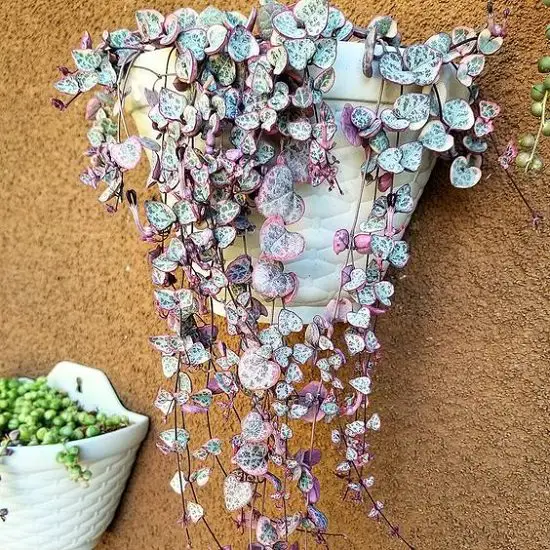
Botanical Name: Ceropegia woodii
This evergreen semi-succulent trailing vine has heart-shaped leaves that are splashed with shades of blue, green, silver, and purple. They love to bask in the sun, so place them near a window when growing indoors, in a hanging basket, or any decorative pot. See more heart-shaped houseplants here.
3. Ruby Necklace
Botanical Name: Othonna Capensis
It’s a fast-growing succulent with unique bean-shaped foliage. The main attraction is its ruby red to purple stems. The daisy-like yellow flowers tower above the plant and create a fabulous show. They are perfect for rock gardens and as trailing succulents in containers.
4. String of Nickels
Botanical Name: Dischidia nummularia
The succulent leaves of this plant are identical to flat coins hanging through the strings. It’s a fascinating hanging basket plant that also looks well in tall indoor planters.
Want to grow Dischidia Nummularia, check this post
5. Monkey’s Tail Cactus
Botanical Name: Hildewintera colademononis
Looking for a succulent that would turn heads? Well, the monkey’s tail is the one. Its long stems are engulfed with white hairy spines that trail down to a length of 2.5 m, resembling the monkey’s tail.
6. String of Pearls
Botanical Name: Senecio rowleyanus
String of Pearls is a unique succulent with trailing stems adorned by small, spherical leaves that resemble pearls on a string. Its charming cascading growth adds a whimsical touch to hanging planters and indoor spaces.
Look at the beautiful string of pearl varieties here
7. Fishbone Cactus
Botanical Name: Epiphyllum anguliger
The Fishbone Cactus showcases long, flat stems with notched edges, resembling a fishbone. Its intricate, zigzag pattern and nocturnal, fragrant flowers make it a captivating and exotic addition to any succulent collection.
Learn about growing fishbone cactus here
More Trailing Succulents
- String of Bananas
- Trailing Jade
- Lepidium cruciforme
- String of Beads
Check out our list of Best Trailing Succulents to learn about similar plants.
Flowering Succulents
As succulents are such showy plants, most people don’t give a second thought to whether they are flowering or not. But they do flower, and here are some of the well-known flowering succulents.
8. Crown of Thorns
Botanical Name: Euphorbia milii
This evergreen succulent is prized for its gray-green foliage and never-fading bright flowers. It can reach a height of three feet and won’t do well outdoors in colder regions. Expect the plant to bloom in springs until the end of the warm season. In warm climates, it blooms year-round. Learn how to grow it here!
Caveat: The sap of this succulent is mild to moderately toxic; handle with care. Be extra vigilant if you’re a pet owner; its thorns are sharp.
9. Rock Purslane
Botanical Name: Calandrinia spectabilis
The flowers grow on the top of two feet long stalks and tower above this shrubby perennial, just about eight inches tall. Eye-catching magenta flowers resemble the poppy blooms in shape and last for a short time.
10. Christmas Cactus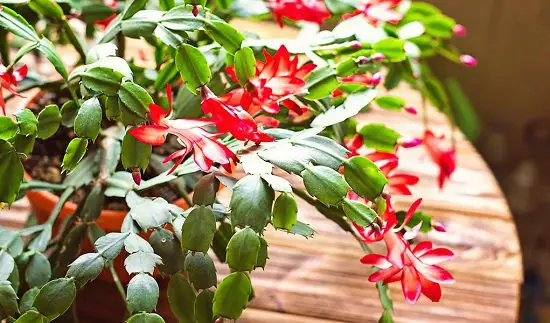
Botanical Name: Schlumbergera x buckleyi
The fact that it blooms around the holiday season makes it a perfect addition to festive home decor. Also known as holiday cactus, the flowers range from purple, red, and pink. Learn how to care for Christmas cactus here.
Worried for Christmas Cactus Turning Purple? Find Reasons and Solutions here
11. Flowering Kalanchoe

Botanical Name: Kalanchoe blossfeldiana
With so many different colors, such as red, pink, yellow, and orange, it becomes the best flowering succulent. The foliage doesn’t lag either; with its waxy, dark green, and ovate shape, it does steal the show. Flowers grow in clusters like pentas.
Look at the types of flowering kalanchoe here
10. Afterglow
Botanical Name: Echeveria ‘Afterglow’
It produces attractive orange to red color flowers. The broad leaves have a somewhat powdery texture and are arranged in the form of a rosette. The pinkish lavender leaves splashed with delicate pink on the edges give it a desirable look.
11. Desert Rose
Botanical Name: Adenium obesum
The Desert Rose is a stunning succulent tree known for its thick, swollen trunk and striking, trumpet-shaped flowers in vibrant hues like red, pink, and white. Its drought-resistant nature and graceful appearance make it a prized choice for arid landscapes and indoor settings.
Look at pretty pink succulents here
More Flowering Succulents
- Purple Ice Plant
- Jade Plant
- Peanut Cactus
Check out our list of Best Flowering Succulents to learn about similar plants.
Shade Tolerant Succulents
Shade-tolerant succulents can grow in low-light conditions without any difficulty. They’re ideal for indoor environments as well.
11. Snake Plant
Botanical Name: Sansevieria trifasciata
It’s not possible to talk about shade-tolerant succulents and not include snake plants in it. It’s the most forgiving plant out there, not only because of its ability to do well in low light but when it comes to watering–It thrives on neglect. Learn about these snake plant benefits as well.
Learn about growing snake plants in water here
12. Devil’s Backbone
Botanical Name: Euphorbia tithymaloides (Pedilanthus tithymaloides)
This large and lush succulent plant can tolerate shade easily. It can grow about 8 feet tall, a large houseplant for living rooms and offices. It is prized for its unique zig-zag patterned stems and variegated foliage.
Caveat: Since it’s a part of the notorious Euphorbia genus, all parts are toxic.
13. Ponytail Palm
Botanical Name: Beaucarnea recurvata
Also known as an elephant’s foot palm because of its thick trunk. It’s not exactly a palm but succulent. The long, thin leaves cascading downwards give this plant a unique and exotic look. Due to its slow-growing habit, you can keep it in a pot for years.
Check Best Tabletop Palms here
14. Fox Tail Agave
Botanical Name: Agave attenuata
It’s one of the landscapers’ favorite agaves due to the uncommon inflorescences, or you can say the blooms that look like Foxtail, Lion’s tail, or Swan’s neck.
15. Panda Plant
Botanical Name: Kalanchoe tomentosa
Also known as pussy ear, it’s one of the cutest succulents you can have in your collection. Children adore the fine white hairs (trichomes) that cover the entire leaves. Also, the edges are marked with reddish-brown spots.
16. Jade Plant
Botanical Name: Crassula Ovata
The Jade Plant is a hardy succulent with thick, fleshy leaves that store water, giving it a glossy appearance. Its tree-like growth, vibrant green color, and resilience make it popular for indoor decoration and Feng Shui symbolism.
More Shade Tolerant Succulents
- Aloe
- Kiwi Aeonium
- Spider Agave
Check out our list of Shade Loving Succulents to learn about similar plants.
Cacti succulents
All cacti are succulents, but all succulents are not cacti. The succulents that fall in the category of cacti have areoles from where spines, leaves, hairs, and flowers grow. Check out this list of some of the best cacti you can grow in pots.
16. Chin Cactus
Botanical Name: Gymnocalycium mihanovichii
It’s a miniature cactus that’s spherical but elongated and grows to around 4 cm in height and 6 cm in diameter. You’ll be fascinated by its colorful hues of dark green and bright pink. Flowers are silky and can be green, yellowish-white, pink, or white in color.
Explore beautiful cactus with arms here
17. Rat Tail Cactus
Botanical Name: Disocactus flagelliformis
This plant can surely intrigue your guests because of the thick long stems that are rat tail’s look alike. The long hairy stems look excellent when trailing down from the hanging baskets. The magenta color flowers are also showy.
18. African Milk Tree Cactus
Botanical Name: Euphorbia trigona
This slow-growing cactus is not really a cactus but a succulent. It’s super easy to grow, even for beginners, and reaches a height of 6 to 8 feet. It loves a full-to-part sun position, and all the other growing requirements are similar to other euphorbias.
Learn about growing African milk tree cactus here
19. Angel Wings Cactus
Botanical Name: Opuntia microdasys
It’s also popular with the name bunny ears cactus, you can understand why. The thick pads are clustered together, and one grows from the other, forming a shape like bunny ears. The flowers are pale yellow and appear in summer, which then turns into red to purple fruits.
20. Old Lady Cactus
Botanical Name: Mammillaria hahniana
The appearance of this cactus justifies its ludicrous name–White hairs covering the entire sphere-shaped cactus. Pink blossoms grow out from the top and look as if they are protruding from the head.
More Cacti Succulents
- Candelabra Cactus
- Golden Ball Cactus
- Peanut Cactus
- Hedgehog cactus
- Star Cactus
Check out Types of Columnar Cactus Varieties here
Colorful Succulents
Succulents come in a variety of colors apart from vibrant green, which is a pretty standard color. Plus, you’ll be able to add these colors to your gardens without much fuss because of the low-maintenance nature of succulents.
21. Purple Heart
Botanical Name: Tradescantia pallida
The tender stems are susceptible to breakage, so don’t keep it in areas where it’s open to constant brushing. As the name suggests, the lush foliage is striking purple and does well as a groundcover, edging plant, and even in hanging baskets.
22. Blue Chalksticks
Botanical Name: Senecio serpens
Does the temperature remain above freezing outdoors in your region? Blue chalksticks present an excellent choice as a groundcover in such areas. You can also have them in a container as an ornamental plant. The stems are cylindrical in a finger-like shape with a powdery texture and bluish-green color.
23. Sticks on Fire
Botanical Name: Euphorbia tirucalli
24. Morning Light Echeveria
This hybrid echeveria variety has an appearance of the colors of the beautiful morning light–Pink to bluish Lavender, and a diameter of six inches.
More Colorful Succulents
- Black Beauty ‘Aeonium’
- Moon Cactus
- Dragon’s Blood
- Campfire Plant
Check out our list of Colorful Succulents to learn about similar plants.
Mini Succulents
These succulents don’t grow much big in size and usually do well in small containers. Some slow-growing succulents also come under mini succulents as they take a long time to reach their mature size.
25. Haworthia ‘Star Cactus’
Botanical Name: Haworthia retusa
The thick triangular leaves are arranged together as a star-shaped rosette that looks very pretty. It grows up to 4 inches tall with an attractive shade of light green variegated foliage. In late springs to summers, it bears white tubular flowers.
26. Frailea
Botanical Name: Frailea mammifera
This one is a cute mini cactus with a somewhat spherical shape. The usual height is up to 1.2 inches, and the diameter is only 1 inch. The interesting fact about this succulent is its bright yellow flowers that bloom in hot weather are larger than the plant itself.
27. Zebra Cactus
Botanical Name: Haworthia fasciata and Haworthia attenuata (Both the species are known as Zebra cactus)
The horizontal white stripes on its leaves resemble the white stripes on zebra, hence the name zebra cactus. It’s a cute little plant that doesn’t grow above six inches tall. Due to its pocket size and tolerance to low light conditions, this succulent can be one of the best office desk plants.
Learn growing haworthia here
28. Hens and Chicks
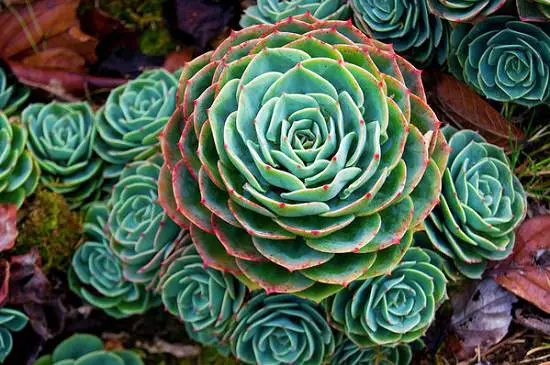
Botanical Name: Many Echeveria and Sempervivum are called Hens and chicks
Hens and chicks are low-growing, small, succulent plants. They got this name because the mother plant, the original rosette, which we call ‘hen,‘ produces many tiny rosette offsets known as ‘chicks.’ Both species grow beautiful rosettes that look like rubber roses.
Learn Ways to Propagate Hens and Chicks here
More Mini Succulents
- Sedum ‘Multiceps’
- Aloe Descoingsii
- Sedum ‘Turquoise Tails’
- Gasteria ‘Little Warty’
Edible Succulents
Don’t be surprised; there are succulents that you can eat. These edible succulents have both ornamental and culinary uses.
29. Dragon Fruit
Botanical Name: Hylocereus undatus
The exotic dragon fruit also goes by the name pitahaya or strawberry pear. This cactus grows best outdoors in warm climates. Here’s everything you need to learn to grow a dragon fruit plant.
Want to know if blue dragon fruit is real or a myth; check here
30. Sedum
Botanical Name: Sedum
This forgiving succulent is very low maintenance. You can grow many sedum varieties in small pots indoors. The not much-known fact about the sedum genus is the leaves of almost all the species are edible and nontoxic, except the yellow flowering ones, which can’t be eaten raw. Read this helpful post to learn about edible sedum varieties.
31. Prickly Pear
Botanical Name: Opuntia ficus-indica
Prickly pear is an ornamental cactus, but unlike others, it bears juicy edible fruits. Also, the flowers are very showy and come in colors of white, yellow, or orange color, depending on the species. You can learn how to grow it here.
More Edible Succulents
- Purslane
- Barrel Cactus


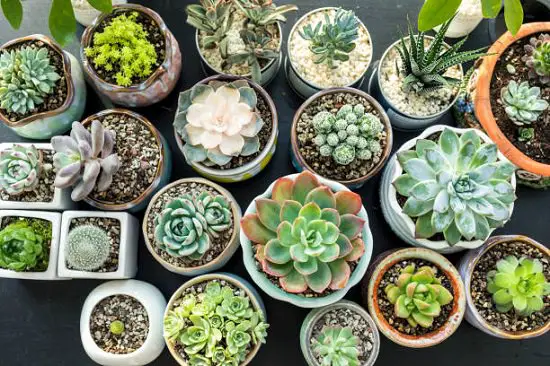
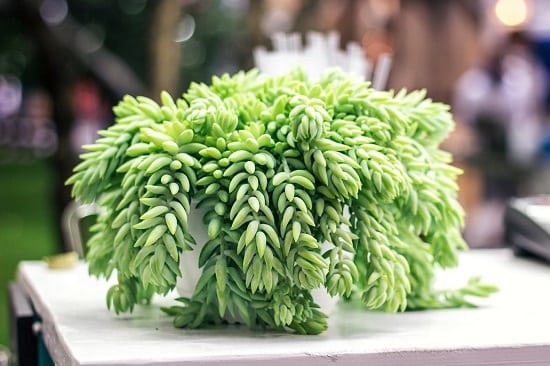
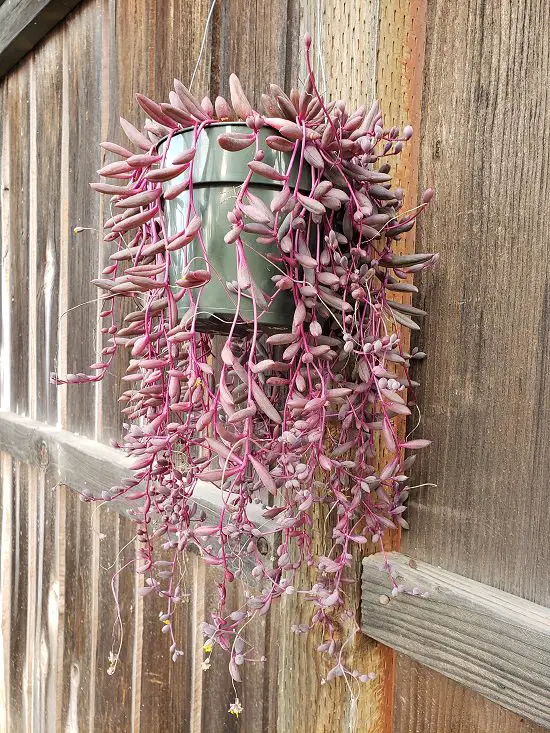
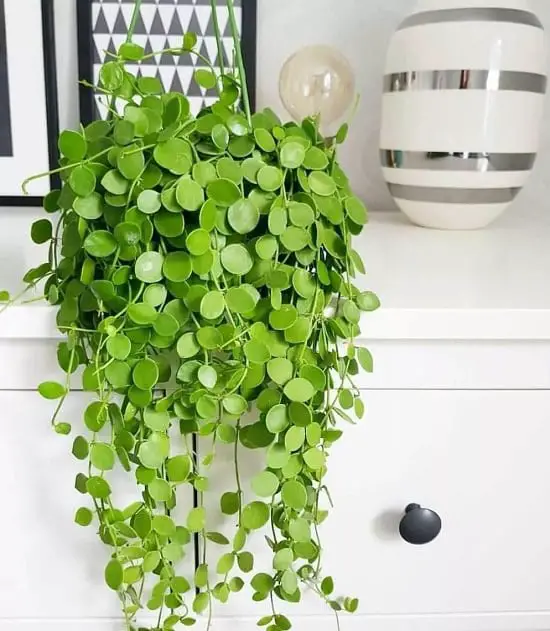
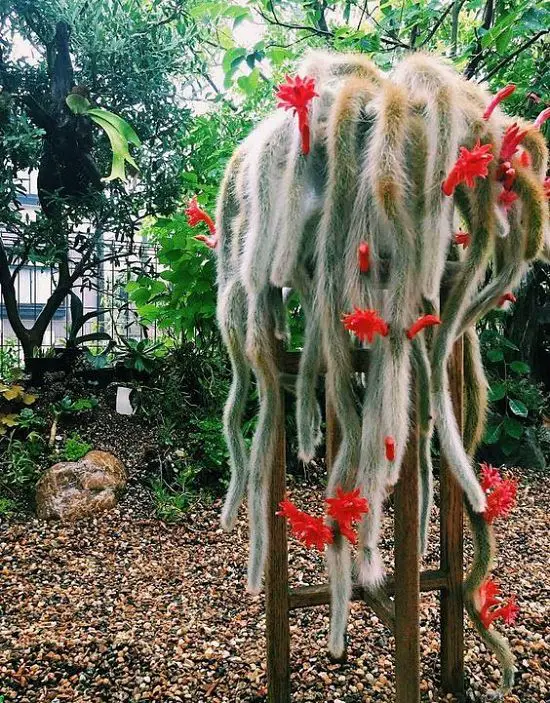
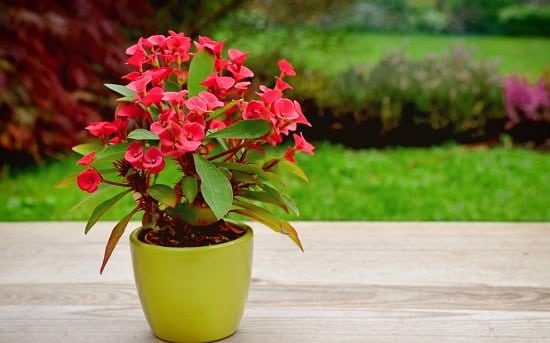
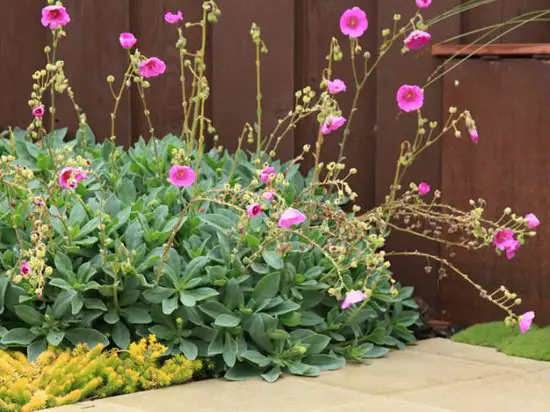


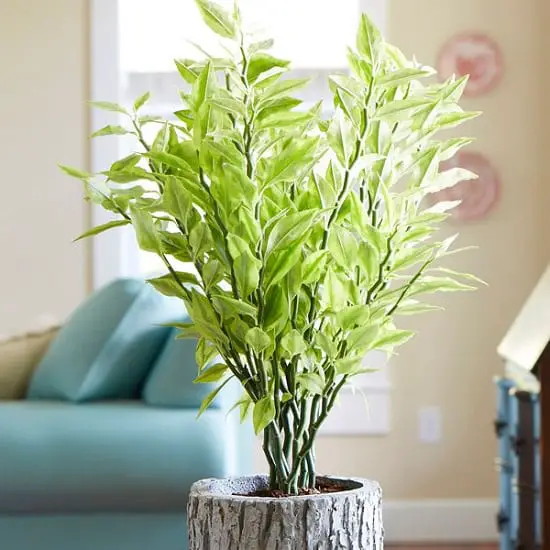
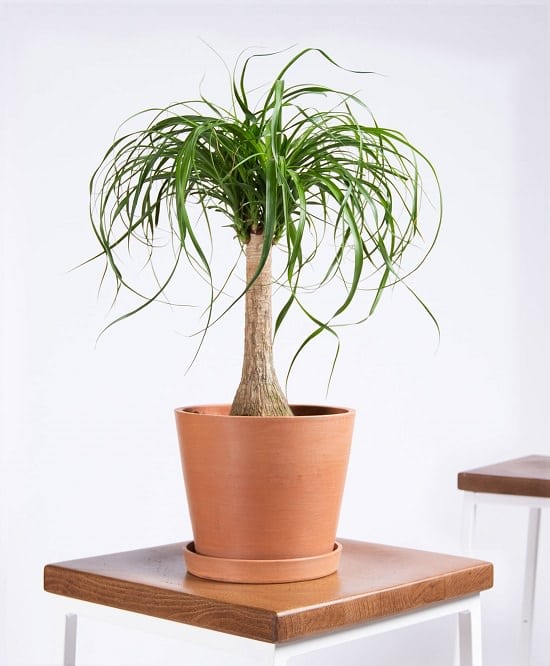
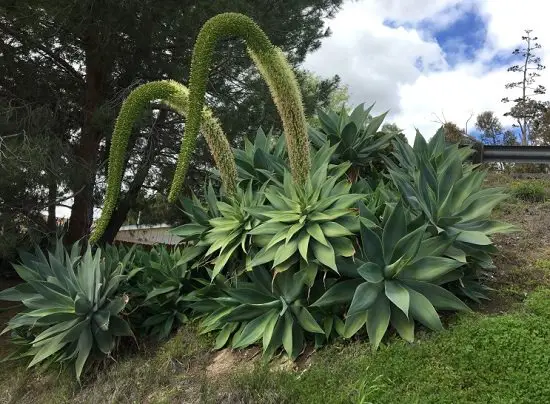
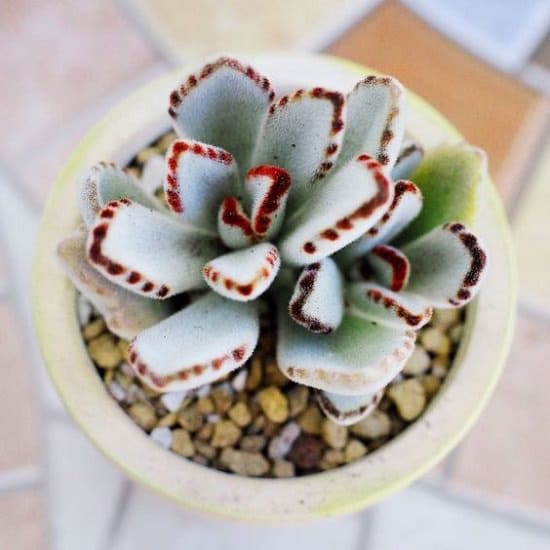
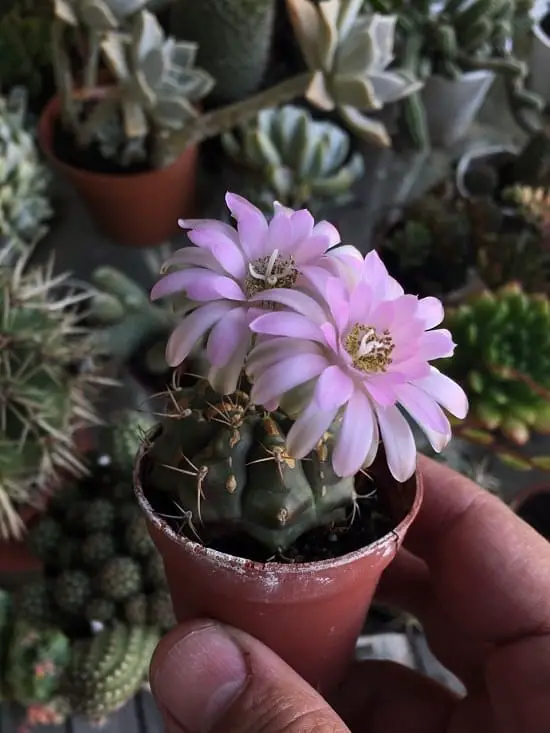

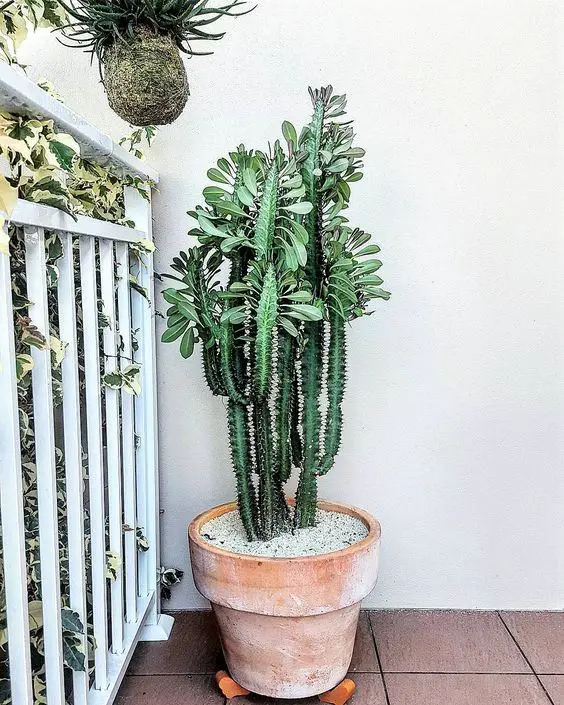
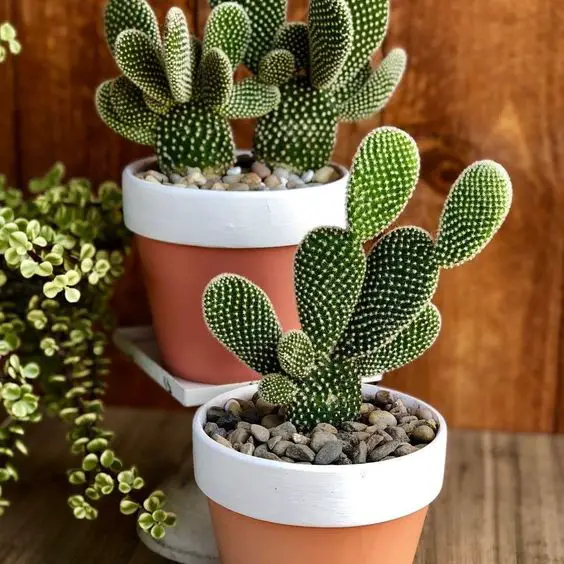


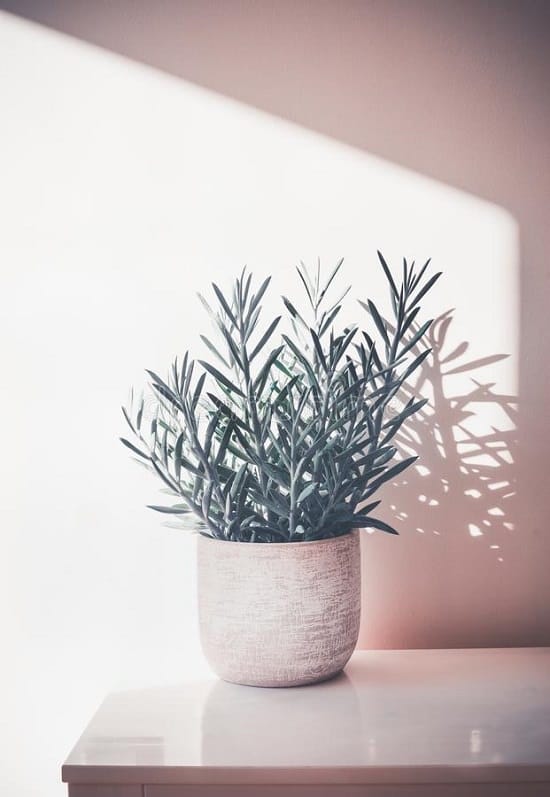
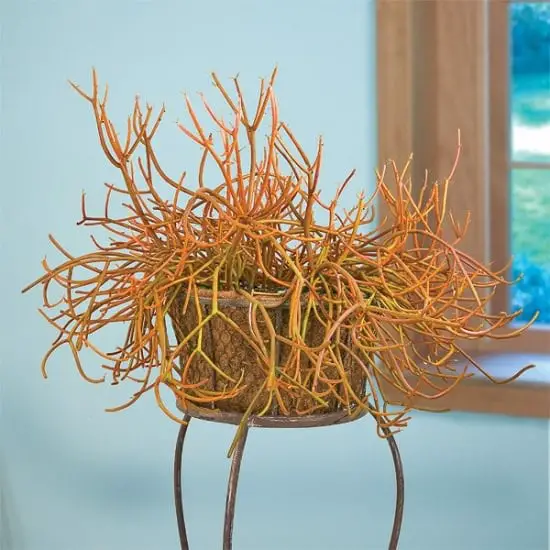
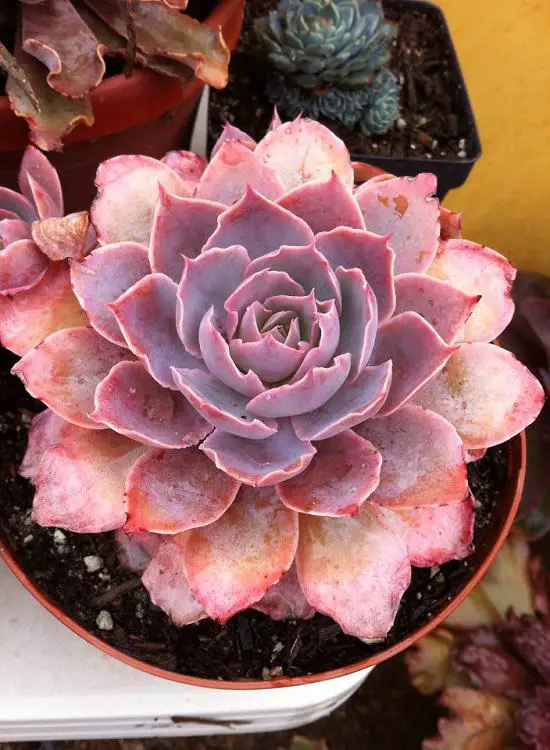

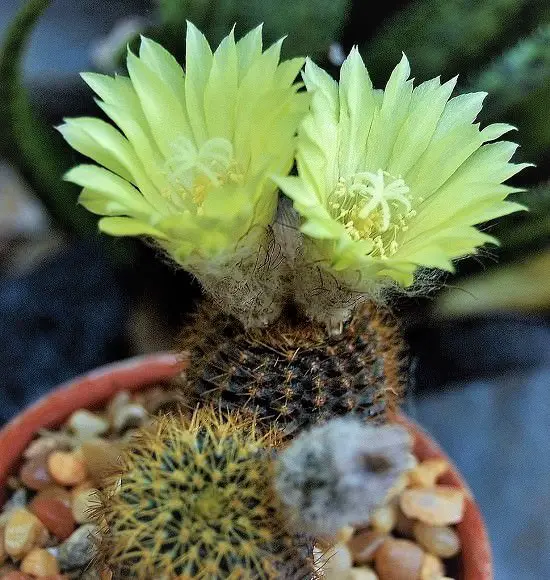
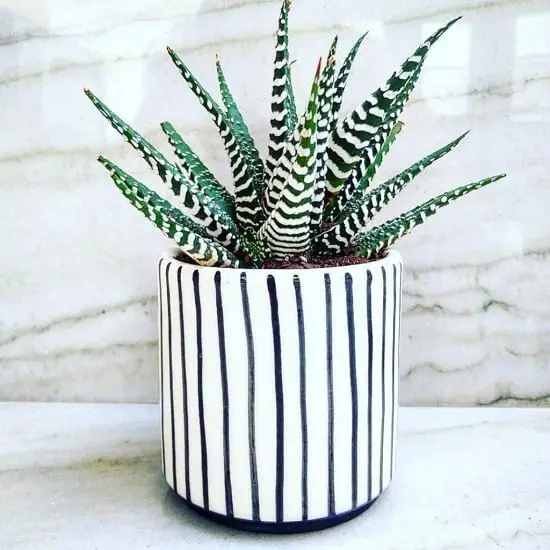
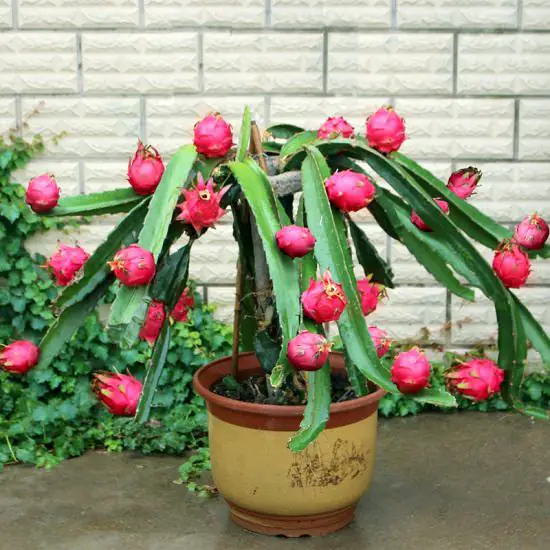
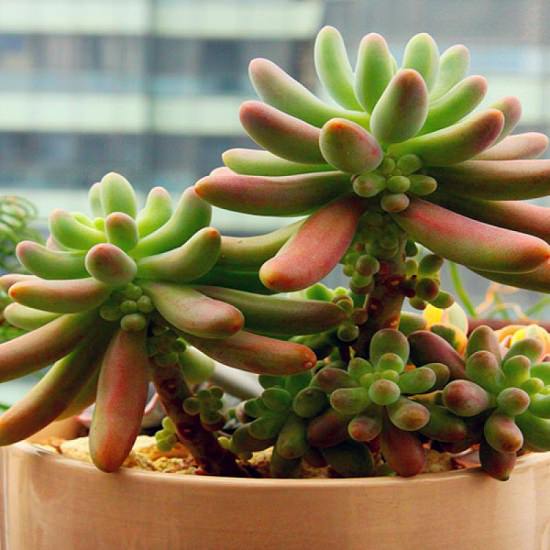
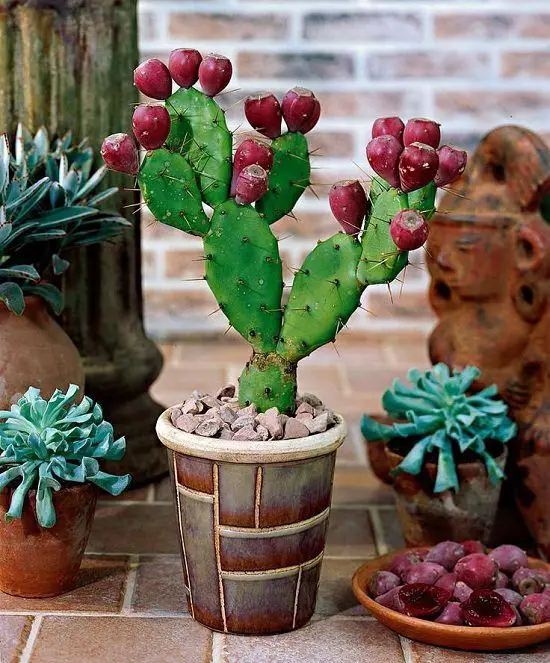

I am grateful for all the fotos ot.the cactuses and succulents.